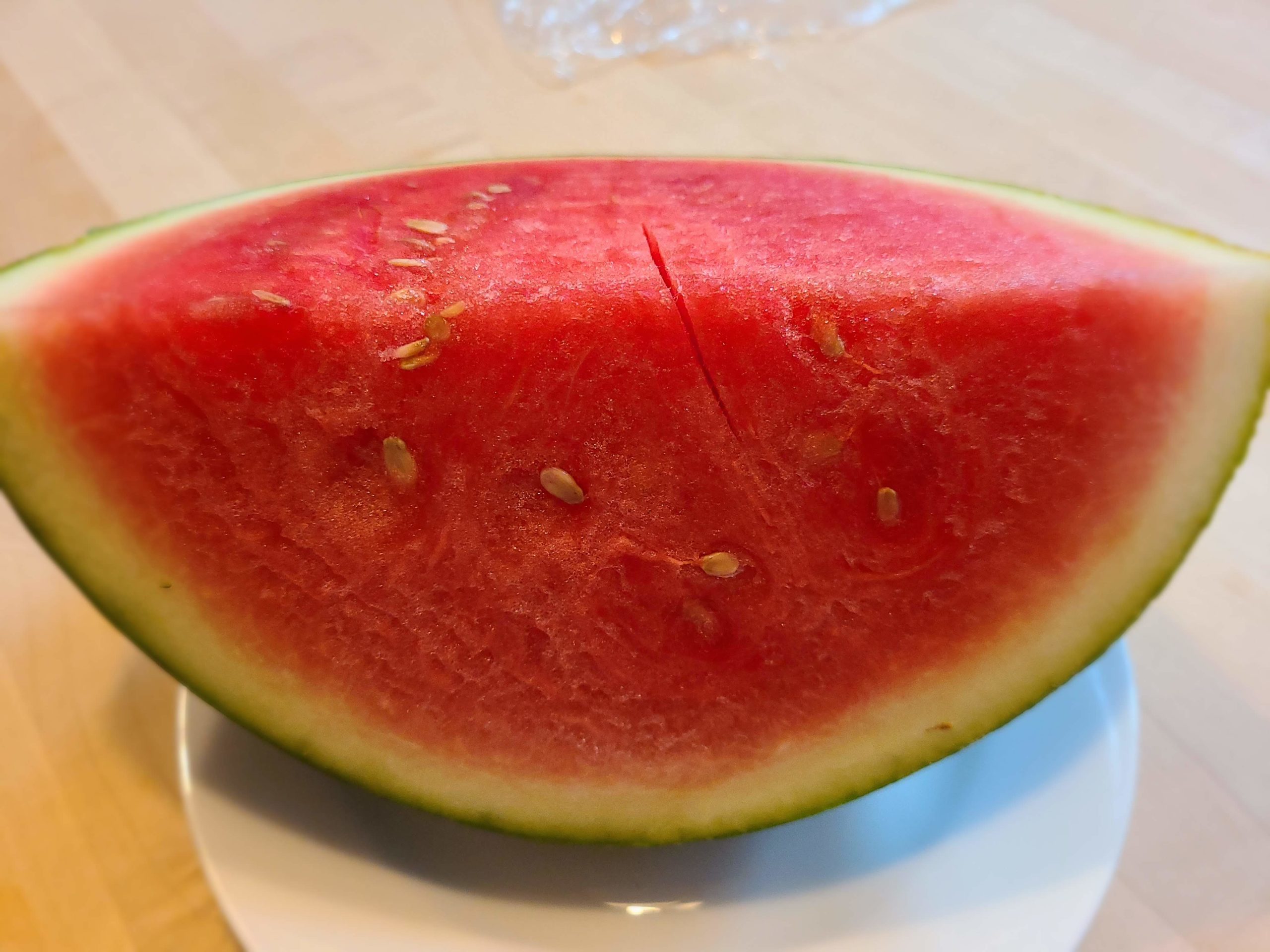Watermelon is one of those fruits I grew up with. My mom would buy a half of it each week. It was long, juicy and it had plenty of seeds. Every time we would go to the farmers’ market I have already talked about here, our reliable merchants, René and José Luis, would cut a tiny piece for me to taste and even in the hottest days, it would be incredibly refreshing. Unfortunately, I didn’t eat it for several years, since being able to each such an amount of one sole fruit would be impossible for me while living alone. I mean, one gets tired of the same fruit all week, don’t you think? But, once we were two and this scrumptiously sweet fruit that was only available during the summer, it easily found its way back to my table. Also, I think it’s among my favorites. But let us talk about it more seriously, and not solely from the heart.
Watermelon is from the cucurbitaceae family, which means it’s related to pumpkin and zucchini. It is probably the biggest fruit we eat nowadays, since under normal conditions while in production, it can weigh up to 10 kilos or 22 pounds. It is believed to come from the Kalahari desert in Africa and that it started to be grown more than 4 thousand years ago. We currently know more than 850 varieties, but in general we classify them in those with seeds and those that are seedless. They are grown in warm and tropical weathers and in fact, the countries with the highest watermelon production in the world are Turkey, Greece, Italy, Spain, China, and Japan. Mexico, however, even when it ranks 11th globally, it is the most important vendor of watermelon to the United States.
Now, because of its seasonality, and even though I remember it at our table mostly throughout the year, it wasn’t but until I lived in Europe, when I learned that through the Summer months is when one can find it. Its peak is between July and August, but it is still available through the beginning of the Fall. In Mexico, where we have two agricultural cycles, thanks to the warmer temperatures of parts of the country, watermelon becomes available for a longer period.
And what can we say about their benefits and nutritional values? Well, this round or oblong fruit with a thick and sturdy skin has a very juicy pulp that is more than 90% water. It is rich in vitamins A, B, and C, as well as potassium, however, the antioxidant pigment that colors it is lycopene, that can even be found in lower amounts in the yellow varieties.
What I particularly love about watermelon is that it helps me feel satisfied, and that even though it’s quite sweet, it’s glycaemic charge is low thanks to the vast amount of water it contains. Therefore, this fruit can be enjoyed by almost anyone, even those with specific restrictions in their diets.
Lastly, I want to share with you what people say about how to choose a watermelon. I honestly cannot confirm these beliefs are as true as Newton’s Laws, however, I cannot deny that some of them are put in practice whenever we go looking for it to the market or the grocery store:
- It should feel heavy for its size
- If one hits it gently with the hand, it should sound hollow
- It is best if it is stained yellow on the side it was resting while on the soil when ripening
So, in the form of agua fresca like my mom used to prepare it, diced with some lime juice and a little bit of sea salt, in a salad with feta cheese, or in sorbet, do not miss the chance this summer to enjoy a little bit of watermelon.

